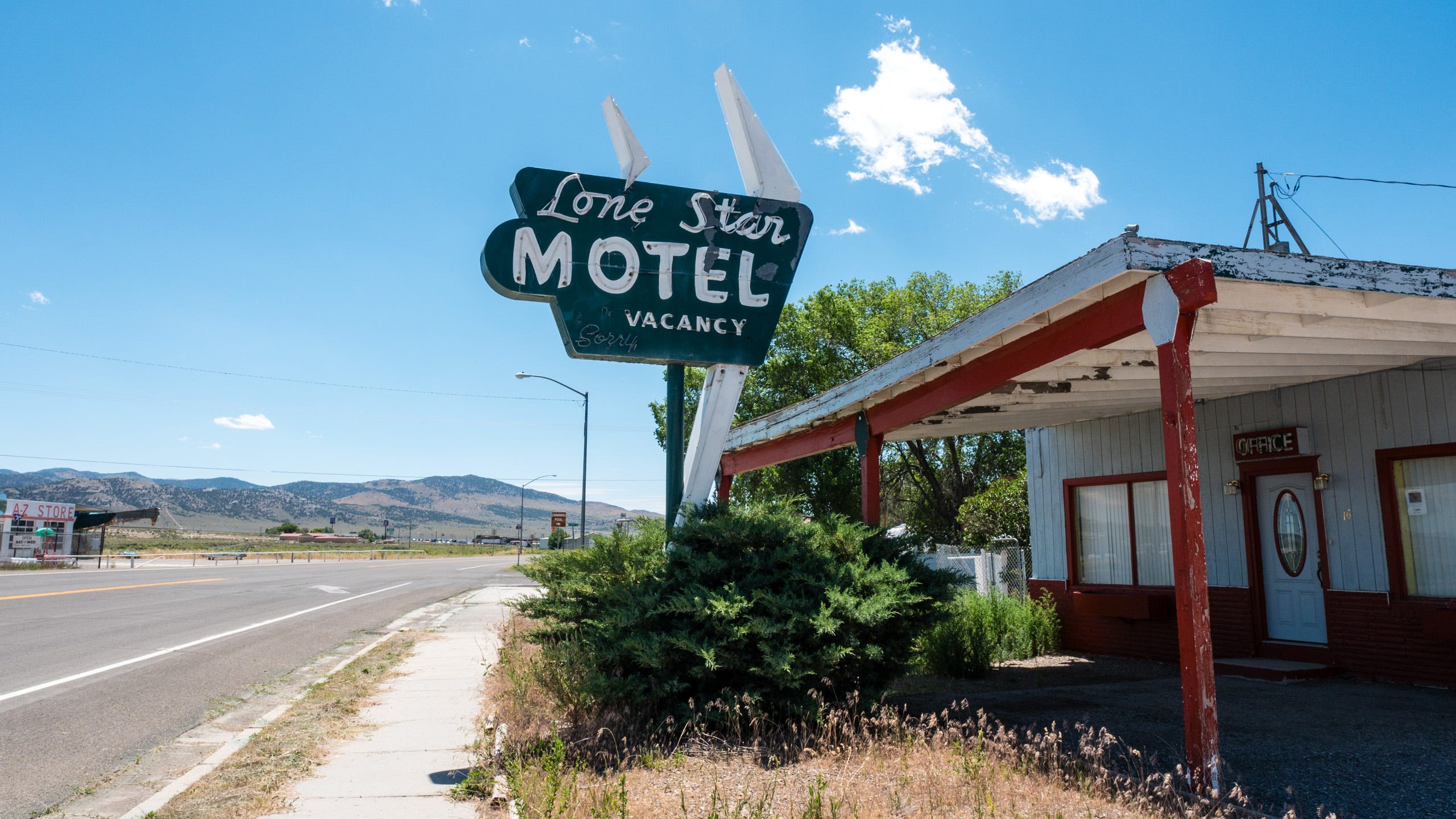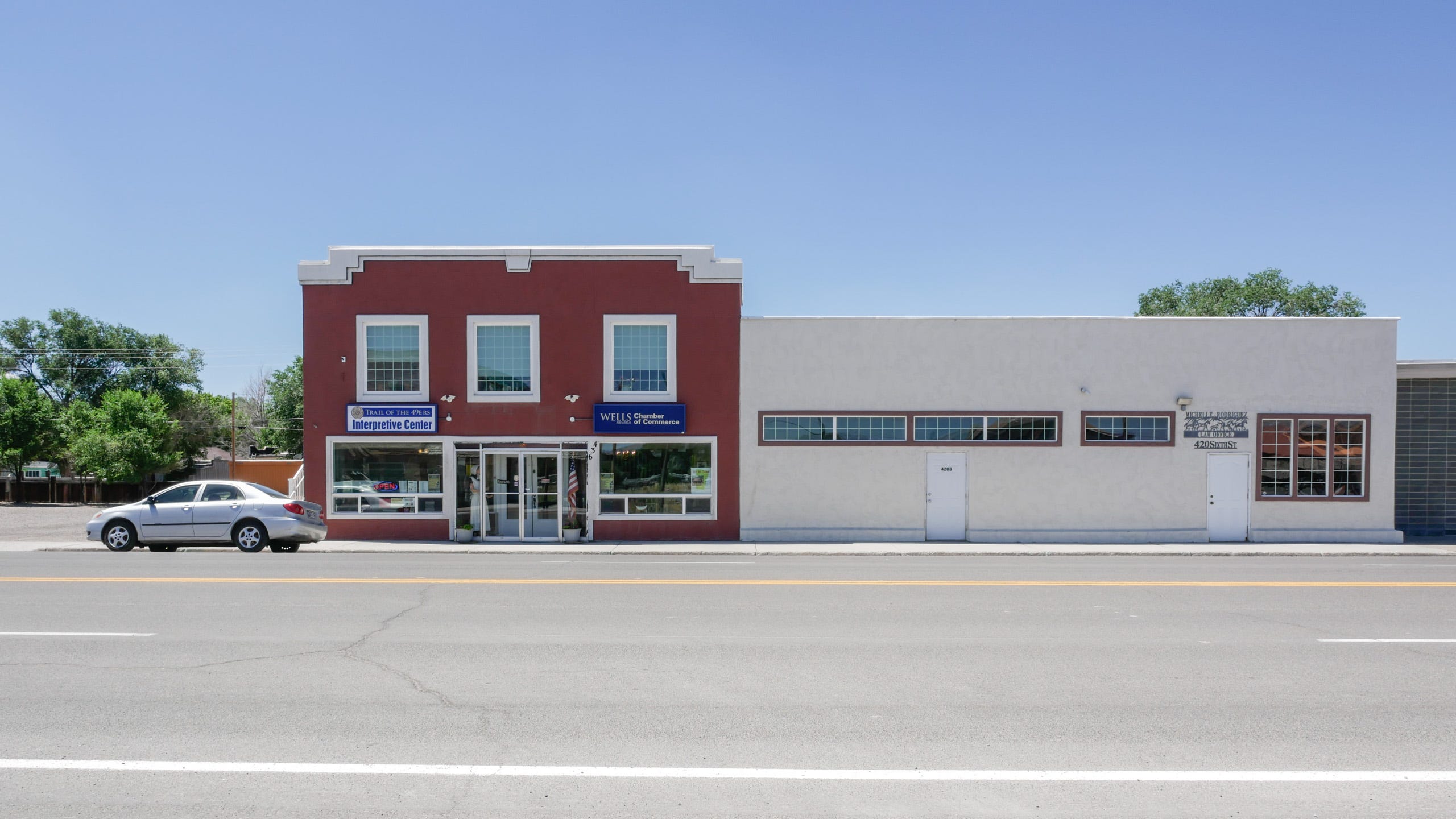[The story begins here… I recommend viewing on a laptop or desktop or even a tablet to let the photos breathe a little more and help convey the vastness of the American West.]
July 16, 2016 — Elko, Nevada
I sit at the same horseshoe shaped eating counter as last night but am accompanied by a different cast of characters for breakfast. One of the older gentleman is a retired motorcycle dealer. He watched me roll in last night and was confused by the Zero's lack of sound. I tell him about the bike and my trip.
I visit the local Walmart to get a heavier gauge extension cord to improve overnight charge times a little. And to not catch on fire, which is kind of important. I hit the road and it’s just 50 short miles to Wells.
"If any of those who read this ever have ridden in one of the bowls made of slats that are known as cycle whirls, a very fair idea can be formed by them of what bouncing over railroad ties on a cycle is like unto. I have ridden an ordinary bicycle in a cycle whirl and know that it is similar in the sensation it affords to that of cycling over the ties. Before I had traveled half of the desert I was having trouble with my inner organs, and violent pains in the region of the kidneys compelled occasional dismounts and rests."
George A Wyman
Remember that perfectly fine motor bicycle that you made a couple of days ago and then hacksawed half of the handlebar off? Imagine riding it from San Francisco, over the Sierra Nevada, and into the desert, riding it over railway ties with a cross section of approximately 6" x 8" and spaced anywhere from 18" to 21" apart. If you are feeling generous, imagine that they have some ballast (stones) filling the gap between them. Imagine the beating that the bike and you would take. Thump. Thump. Thump. Thump. For hundreds of miles and all the live long day. Wyman claimed that he could go as fast as 12 mph bumping along the railroad. That’s it. It’s no wonder his kidneys hurt; mine hurt just thinking about it.
May 25, 1903 — Wells, Nevada
"Wells is a division town of about 200 population, with the biggest hotel I had seen since leaving Reno. The dining room there for railroad passengers would have seated the whole population of the place. They feed largely for 50 cents a meal, and I never left anything on the dishes. Riding over the ties must have jolted my food down to my boots; I was always empty, and I doubt if any restaurant made anything on me, even the high priced ones, where they charge 50 cents a meal.
At Wells I had to tighten up the spokes of the wheels on my Motor-cycle, as I often did at other places. Pounding over the ties was a terrible strain on the bicycle. I marveled every day that it stood it so well."
- George A Wyman
The early morning cool wilts under the rising sun and is replaced by a dry heat that builds and multiplies with every mile. I pull off I-80 into Wells and roll through empty streets with neat rows of low flat houses and empty storefronts. 7th Street, beside the railroad tracks, is empty too, some of the buildings on the verge of collapse. I'm feeling like I'm the only fool out here before I see two women standing with a table of vegetables in the shade of a gazebo. They are the farmer's market and they direct me to the local Chamber of Commerce, which also hosts the local museum. But first, I need a charge.
Crossroads RV Park is a scraggly corner lot of dry, sandy soil with a couple of shade trees on the edge of town. It's empty except for a couple of RVs that look like they have neither recreated or vehicled in years. The office is empty too but I call the phone number listed on a piece of paper taped to the door. Ring…"yeah, I need to charge my electric motorcycle…take the spot by the office?…ok…put the money in the slot?…ok…thanks." It's only when I try to hookup do I realize that they don’t have the 50 amp hookups. And I don't have the proper adapter for their 35 amp connection. But rather than go to an RV park farther from town and walk back in this heat, I commandeer two 120V outlets from adjacent spots and use the on-board standard charger and the Delta Q Quiq Charger together. It'll be slower than a 50 amp hookup but it will have to do.
I shed my riding gear and amble slowly to town, seeking the shade and trying not to sweat.
Towns like Wells are layered like an onion, with the oldest buildings by the railroad and newer structure out by the interstate. As I walk, I cut through the the layers of the onion and travel back in time, past abandoned mid-century motels with their paint peeling and wood weathering under the relentless sun and past other older building until I get to the older center of town.
The Chamber of Commerce hosts a little local museum with artifacts from days gone by and they help me find photos of the town from the early 1900s. I look at one photo - the road is muddy, there is a horse drawn carriage, and there’s a saloon. I ask Bob, whose been helping me find period photos in their collection, if this photo is from Wyman’s era. "No, this is later than 1903" Bob says, flatly, before pointing to the lone woman in the photo and explaining, "You can see her ankles."
I head out to the oldest part of town by the railroad tracks, the part of town depicted in the old photo. Wyman slept here but much of the town's history was wiped out by a 6.0 earthquake in 2008 that knocked out a whole row of buildings by the railroad track, including the hotel that Wyman likely stayed at. Today, it's just a pile of rubble while the neighboring buildings, some with their facades shorn off, await demolition. I grab lunch in a bar with good air conditioning and then get back to the Zero and hit the road.













Nice story and video!